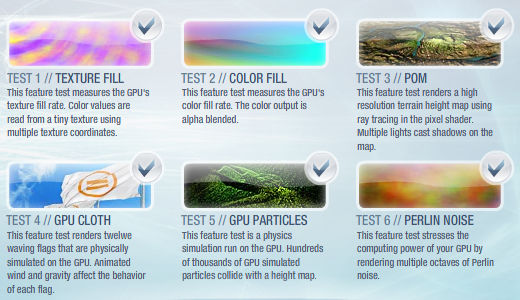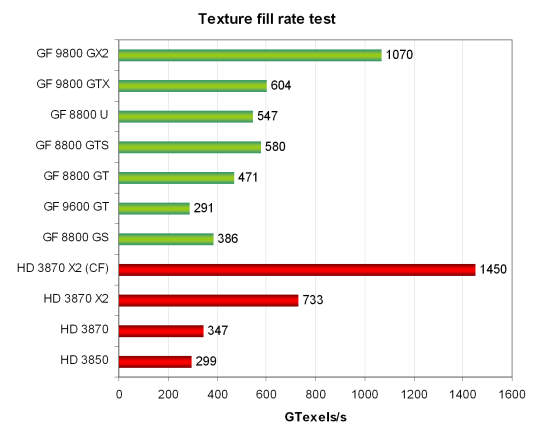Futuremark 3DMark Vantage
|
CPU tests
CPU tests must reflect the real situation in games and be visually interesting to users. Both CPU tests use the same graphics engine as in the GPU tests. But in order to reduce the effect of GPUs, the number of effects is minimized, all post processing effects are disabled except for tone mapping required for HDR renderer. Besides, much simpler shaders are used, geometry models are also simplified as much as possible, shadows are not rendered.
CPU Test 1: AI
CPU Test 2: Physics
The first CPU test imitates AI, the second - computing physics. What concerns the Graphics System section, we are interested only whether our graphics card affects performance and whether the physics test uses AGEIA PhysX library that supports physics processing unit (PPU). By default, the benchmark will use the physics processing unit, but it can be disabled in settings. Unfortunately, this test does not use GPU features to compute physics, as these tasks are performed by a GPU in all graphics tests.
Feature tests
3DMark Vantage traditionally offers feature tests, this time there are six such tests. Each of these tests is used to analyze performance of certain units of a graphics card, they load such units to maximum. Unlike the main graphics tests with many effects and techniques employed simultaneously, these tests focus on performance of specific GPU features. Here is a list of feature tests in Vantage:
Feature Test 1: Texture Fill
The first test deals with texture fill rate. It fills a rectangle with values read from a small texture with many texture coordinates, which are changed in each frame.
I don't understand where such big numbers come from (gigatexels per second)... Result correlations look valid. But this test does not provide advantageous conditions for G9x cards, so these results do not agree with our RightMark numbers.
In other respects, everything is as usual - AMD cards are outperformed by their competitors, only RADEON HD 3850 performs on a par with GeForce 9600 GT. HD 3870 X2 is not much faster than the single-GPU top card from NVIDIA, and the 9800 GX2 is almost twice as fast as the 8800 GTS. So if we don't pay attention to big numbers, this test can be used - it shows correct performance ratios between graphics cards.
Write a comment below. No registration needed!
|
|
 |
|
|
|


